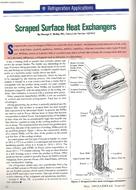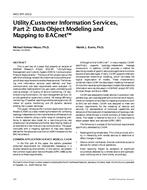Appendix G Performance Rating Methodology (PRM) compared to the previous version of ASHRAE 90.1. The new PRM intends to standardize the Appendix G baseline modeling requirements for all future versions of ASHRAE 90.1 by using a modified ASHRAE 90.1-2004 Appendix G baseline combined with Building Performance Factors (BPFs) to calculate the performance cost index (baseline cost budget). BPFs are regulated energy cost reduction factors based on simulations performed by Pacific Northwest National Laboratory (PNNL) using the ASHRAE prototype buildings and categorized by climate zone and building typologies. Future versions of ASHRAE 90.1 will continue to adopt the revised BPFs published by PNNL to align with the stringency of the version. The new ASHRAE 90.1 PRM is also recognized as an alternative path for energy code compliance in addition to the previously used Chapter 11 Energy Cost Budget (ECB) and the Prescriptive Compliance path.
While the intent is for both Appendix G PRM and Chapter 11 ECB to be equivalent whole building performance compliance methodologies, our experience is that certain building typologies can comply with Chapter 11 ECB without being able to meet or exceed ASHRAE 90.1-2016 PRM. This paper evaluates the performance of the Proposed Design compared to Appendix G PRM Baseline Design energy models developed for six different projects currently in the construction phase. This study helps in identifying the building typologies that are more suitable for this new approach for compliance with ASHRAE 90.1 as well as the key building parameters that impact compliance using PRM. All projects identified for this study are ASHRAE 90.1- 2016 compliant either using the prescriptive approach or Chapter 11. Additionally, this study compares the key differences between the assumptions for as- designed projects and those for the ASHRAE prototypes used to develop the BPFs such as space use breakdown, internal loads, space conditioning criteria, etc. This paper summarizes the key building parameters which may cause compliance inconsistencies when evaluated using this new PRM approach. Lastly, the paper discusses areas where future work may be required to make the new Appendix G PRM approach suitable for all building types.
Citation: 2021 Virtual Conference Papers
Product Details
- Published:
- 2021
- Number of Pages:
- 9
- Units of Measure:
- Dual
- File Size:
- 1 file , 1.2 MB
- Product Code(s):
- D-VC-21-C046


